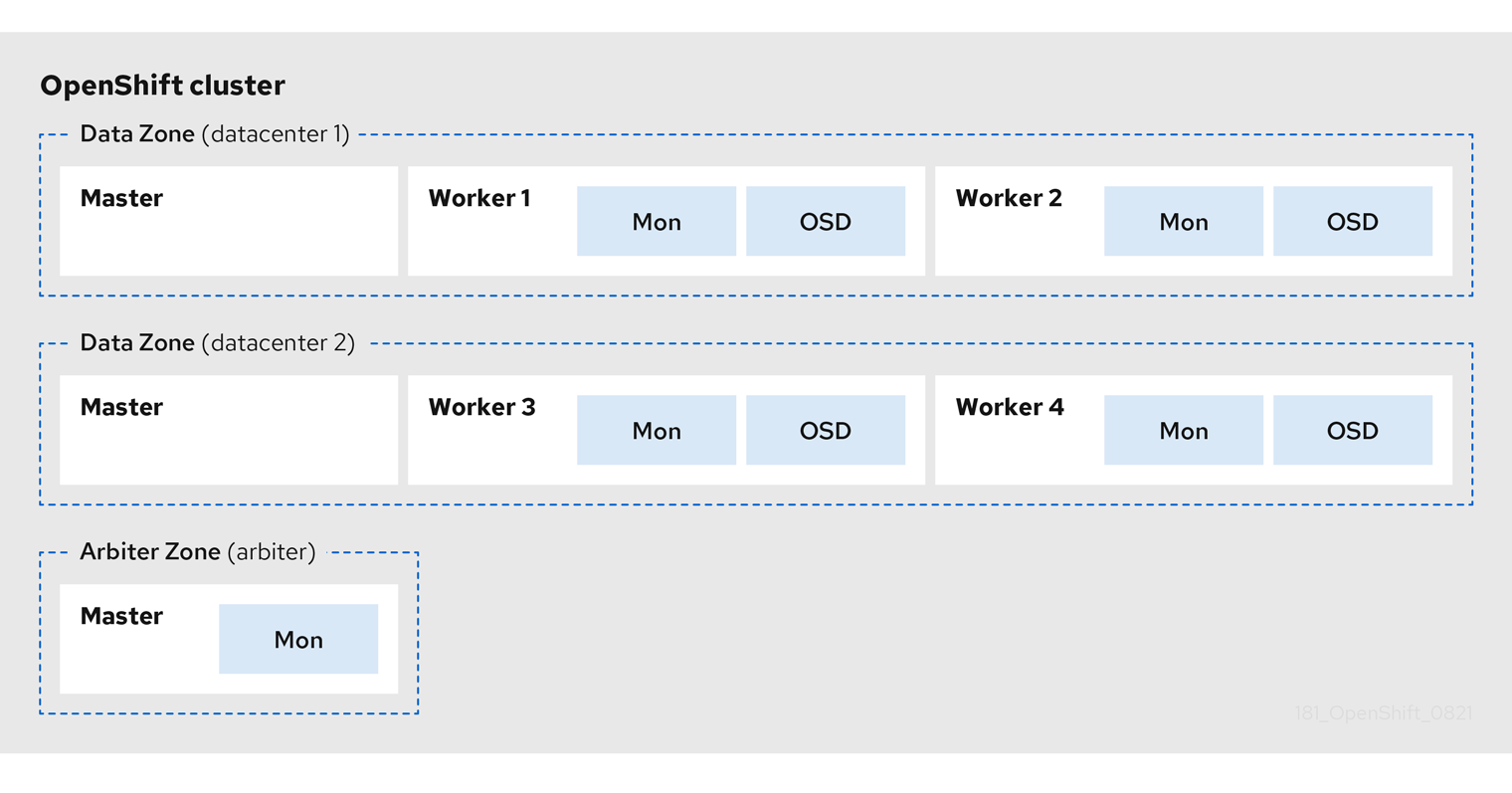Chapter 1. Introduction to Metro-DR stretch cluster
Red Hat OpenShift Data Foundation deployment can be stretched between two different geographical locations to provide the storage infrastructure with disaster recovery capabilities. When faced with a disaster, such as one of the two locations is partially or totally not available, OpenShift Data Foundation deployed on the OpenShift Container Platform deployment must be able to survive. This solution is available only for metropolitan spanned data centers with specific latency requirements between the servers of the infrastructure.
Currently, you can deploy the Metro-DR solution using stretch cluster where latencies do not exceed four milliseconds round-trip time (RTT) between the OpenShift Container Platform nodes in different locations. Contact Red Hat Customer Support if you are planning to deploy with higher latencies.
The following diagram shows the simplest deployment for a Metro-DR stretched cluster:
OpenShift nodes and OpenShift Data Foundation daemons

In the diagram the OpenShift Data Foundation monitor pod deployed in the Arbiter zone has a built-in tolerance for the master nodes. The diagram shows the master nodes in each Data Zone which are required for a highly available OpenShift Container Platform control plane. Also, it is important that the OpenShift Container Platform nodes in one of the zones have network connectivity with the OpenShift Container Platform nodes in the other two zones.

